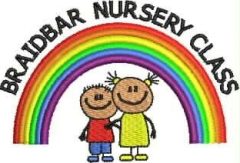Kalimera!
COMING UP
- Yellow + Red group blether at 1pm today on Teams
- Green + Orange group blether @2pm today on Teams
** This weekend marks the RSPB’s Big Garden Birdwatch **
https://www.rspb.org.uk/get-involved/activities/birdwatch/?sourcecode=BWMITH0230&channel=paidsearch&gclid=EAIaIQobChMIpLzYrbC67gIVydPtCh2kzg8FEAAYASAAEgKem_D_BwE
Today and tomorrow we will have lots of suggestions for indoor and outdoor play, all inspired by water! As you play and learn today why don’t you also keep track of the number of times you use water in your day. I wonder if you’ll be surprised at just how frequently we rely on water for all sorts of things. That’s why Miss Paterson sometimes has a little grumble about wasting water when we play with the outdoor tap as it is such a precious resource!
Ice rescue mission! This is a great cold weather activity for this icy time of year. Simply freeze some little animal figures, lego minifigures or other small toys in an ice cube tray, cup or clean yoghurt pot filled with plain or coloured water.
I wonder if you think it’s cold enough to freeze them by putting them outdoors? How do you find out how cold its going to be overnight? Have you ever watched the weather forecast with an adult, or maybe they have an app on their phone that could tell you? I wonder what number on the forecast means its freezing temperature. Time to investigate!
Could you make music with water? If you have some glasses of the same shape and size in your kitchen, you could try this experiment with water and sound! Get an adult to help you fill the glasses to different levels using tap water. If you have a little beater from a musical instrument like a guiro that would be perfect, but a piece of cutlery or kitchen utensil would do would do.
Just as we talk about small, gentle actions when playing the instruments in nursery, you need to do the same here. Notice what sounds are made when you gently tap the glass. Each glass has its own sound depending on how much water has been poured in. Can you describe the sounds using high/low/higher/lower? I wonder if you can compose your own melody and even sing along? Be sure to let us know if you do!
Have you ever noticed how the rain or the spray from a hose, or a spilled cup of water seems to change the colour of a surface and leave marks? Why might this happen on some surfaces but not others?
Why don’t you do your own mark-making with some water painting? Depending on the weather you might choose to do this indoors or outdoors. Maybe you could paint lines, shapes or patterns. Perhaps you could practise some number or letter formation and write your name…
Water play is an excellent way to develop both understanding and language around capacity and measure. Here are some ideas that could even be incorporated into bathtime.
Who loves bubbles? Here is an easy experiment to make your own in a cup, bowl or plate.
You will need :
· A jug of water
· Washing up liquid
· A spoon
· A cup/bowl/plate
· A straw
· If you have glycerin, you can add that too.
Method:
· Mix some water and washing up liquid (and glycerin) together in the jug using the spoon. You may have to try this several times, adjusting quantities, until you get the best bubble mixture possible.
· Pour a small amount mixture onto the plate, covering it.
· Take the straw, placing one end on the plate and the other in your mouth. BLOW!
It is best to blow slowly, taking your time. As you get better at making your bubbles you can even try making a bubble tower or placing one bubble inside the other!
You can try this with some paint or food colouring added. Have the coloured mixture in a cup, sitting in the middle of a paper plate or piece of paper. As the bubbles fall over they should leave some interesting marks on the page which may lead to some rich discussion and imagination.
G. Many people find it calming to be near a river, lake or sea. I’m lucky as I can walk along the river just five minutes from my house and watch and listen to the water, ducks and even the odd heron and otter. Most of us can’t visit bodies of water just now so here are some ideas for indoor water calm jars/bottles that might help you to relax and focus when you need a quiet moment.
H. This music and these beautiful underwater images should help you breath more slowly and relax
Or you could try some sea-themed yoga
H. A watery story to finish today. Where will your river take you? Maybe you could draw and write your own story.














